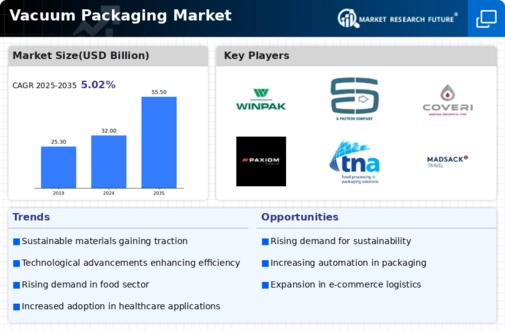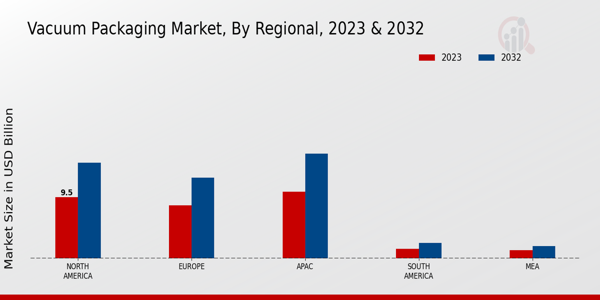The Vacuum Packaging Market has seen significant evolution and growth, characterized by intense competition among various players striving to gain a foothold in this dynamic domain. This market primarily revolves around the preservation of food and non-food items by employing vacuum sealing technology to extend shelf life and enhance product freshness.
Factors such as increasing consumer awareness about food safety, growing demand for ready-to-eat meals, and the rise of e-commerce significantly contribute to the competitive landscape of the vacuum packaging industry. Companies are constantly innovating to introduce advanced packaging solutions that cater to diverse consumer preferences across various sectors, including food, pharmaceuticals, and electronics, thus intensifying the competition.
Additionally, the market is witnessing a surge in strategic partnerships, mergers, and acquisitions as firms aim to consolidate their market positions and enhance their offerings, thereby influencing market dynamics.
Focusing on 'Vacuum Packaging Systems', this company has established itself as a crucial player in the Vacuum Packaging Market. It possesses a comprehensive product portfolio that includes advanced vacuum sealing machines that cater to diverse needs across multiple industries.
One of the key strengths of Vacuum Packaging Systems lies in its commitment to innovation and technology, leading to the development of versatile and user-friendly packaging solutions that promote efficiency and cost-effectiveness.
The company's strong emphasis on research and development allows it to stay ahead of market trends and offer products that meet the evolving demands of customers, thereby solidifying its position in the market. Moreover, its robust distribution network and strategic partnerships further enhance its market presence and accessibility, ensuring that its vacuum packaging solutions are available to a wide range of clients ly.
In the context of the Vacuum Packaging Market, 'Winpak' demonstrates significant capabilities and a robust market presence. The company specializes in the production of high-quality packaging materials and machinery, emphasizing sustainability and efficiency.
Winpak's strength lies in its advanced technology that enables the creation of customized vacuum packaging solutions specifically designed to cater to the unique requirements of its clients in various sectors.
With a strong focus on research and innovation, Winpak continually enhances its product offerings and operational efficiencies, ensuring competitiveness in a rapidly evolving market. The company's commitment to quality control and customer satisfaction is reflected in its meticulous production processes and adherence to international standards.
Additionally, Winpak's strategic investments in expanding its manufacturing capabilities and distribution networks contribute to its growth and solidify its status as a leading entity in the Vacuum Packaging Market.



 Source: Primary Research, Secondary Research, Market Research Future Database and Analyst Review
Source: Primary Research, Secondary Research, Market Research Future Database and Analyst Review

















Leave a Comment